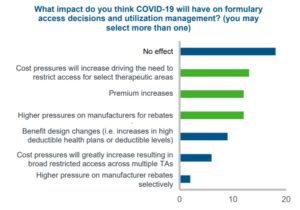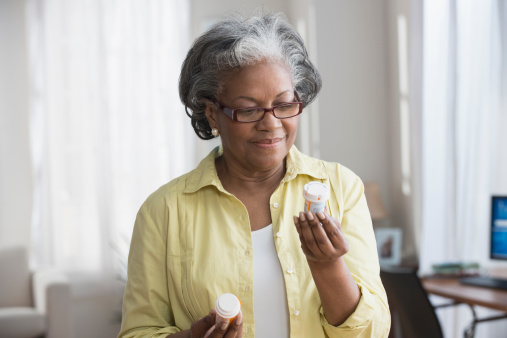COVID-19 has had a huge influence and impact on healthcare systems across the world. The pharmaceutical industry, however, hasn’t experienced a big change from the pandemic like the healthcare industry has.
Drug Channels’ blog post from Wednesday, May 27, 2020, shares important news and updates on the trends that COVID-19 brought to the pharmaceutical industry. The article discusses the current and projected trends post pandemic from pharmaceutical experts.

The survey shows how payers believe COVID-19 will affect formulary access decisions and utilization management.
“In late April, IQVIA surveyed representatives from 43 U.S. payers” to see how the payers think COVID-19 will affect formulary access decisions and utilization management. [According to the survey], payers [are expecting to see] tighter formularies, greater patient cost-sharing obligations, higher rebates and more exclusions.”
Even though state governments issued stay-at-home orders to assist with ceasing the spread of the virus and the stay-at-home orders encouraged pharmacy patients to get their prescriptions delivered, experts don’t believe that COVID-19 will have a huge impact on the pharmaceutical industry. While there was a transition period of patients to get their prescriptions delivered, this has since plateaued, and retail pharmacy has taken a little bit of a hit. What does this mean for the future of pharmacy? “Mike Shneider, principal at Avalere Health, [believes that chronic patients and patients with] long-term medications are likely to [continue receiving their prescriptions in the mail] – assuming they are still available after the pandemic. [What will be the secret to continuing the mail/home delivery trend? According to Schneider, the] key to continuing the trend [depends on] seniors’ [personal preference. Seniors are] the largest demographic of prescription drug users.”
Drug Channel’s blog post shares that COVID-19 will not have a large overall impact on the pharmaceuticals mail market share. In “2019, mail pharmacies accounted for 9 percent of total 30-day equivalent prescriptions [and] for the first 20 weeks of 2020, mail pharmacies have gained less than 0.5 percent of prescription share.” While mail delivery prescription growth has not surpassed 2019’s numbers, it has been making a comeback over the past two weeks.






